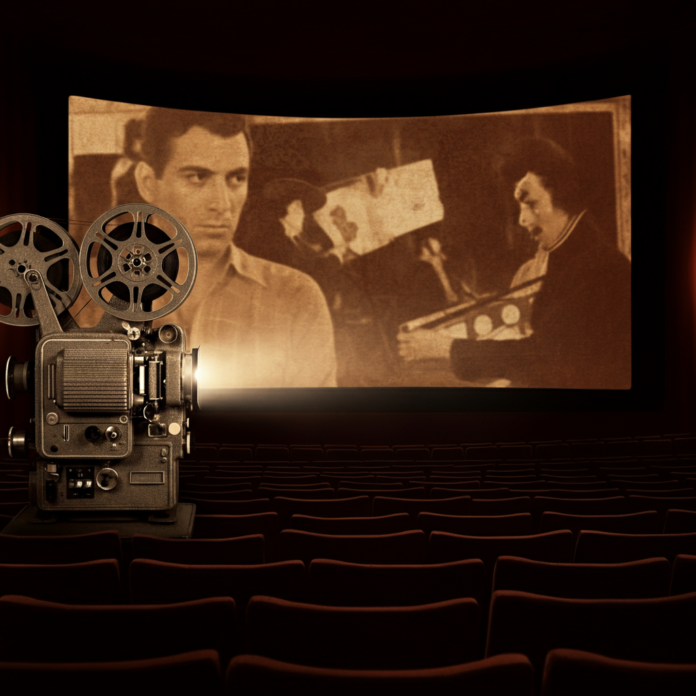Cinema is a medium that thrives on innovation, and few advancements have left as lasting an impact as the introduction of 9x film. Valued for its unique aesthetic and practical benefits, 9x film has secured its place in the annals of cinematic history as a tool beloved by filmmakers and revered by cinephiles. But what exactly is 9x film, and why does it continue to hold such significance?
This post takes a deep look at 9x film, tracing its origins and evolution, showcasing its most notable examples, and examining how its influence shapes cinema today. For film enthusiasts and cinephiles alike, this is a celebration of one of filmmaking’s most cherished formats.
Historical Context
The 9x film format was first introduced during the mid-20th century as filmmakers searched for ways to expand their creative horizons. Originally designed as a compromise between the high skill required for professional formats like 16mm and the consumer accessibility of formats like 8mm, 9x film quickly found its niche within the industry.
Its golden era emerged between the 1960s and 1980s, when independent filmmakers and international auteurs used the format to experiment with visual style and narrative storytelling. 9x film became a hallmark of art-house productions, with its raw, grainy quality lending authenticity and emotional depth to cinema.
During this time, 9x film became synonymous with experimental and avant-garde filmmaking. Directors like [Name an Influential Director] leveraged the format to challenge mainstream conventions, creating works that continue to shine as examples of artistic ingenuity.
Key Characteristics
What sets 9x film apart from other formats is its distinctive technical features. These attributes endow it with a visual and tactile quality that remains unmatched even in today’s digital landscape.
- Frame Size and Texture
9x film produces frames that are slightly larger than traditional consumer-grade film, resulting in a unique grain that gives it its characteristically warm, vintage look. This texture adds an organic dimension to the visuals, often evoking nostalgia in viewers.
- Portability
Compared to bulkier formats like 16mm or 35mm, 9x film is compact and lightweight, making it portable and perfect for independent productions and documentary filmmakers shooting on-location.
- Versatility
The format adeptly handles both black-and-white and color palettes, making it suitable for a variety of storytelling needs—from stark, poignant dramas to vibrant, experimental works.
- Cost-Effectiveness
For decades, 9x film was heralded as an affordable alternative for filmmakers operating on shoestring budgets. Its ability to yield professional-grade results at a fraction of the cost was instrumental in democratizing filmmaking.
These characteristics made 9x film a favorite for directors who wanted flexibility without sacrificing artistic integrity.
Notable Examples
Some of the most groundbreaking films in history were shot on 9x film, heralding the format’s power in storytelling and visual artistry. Below are a few noteworthy examples:
- “Indie Classic A” by Director X
Hailed as a masterstroke of minimalism, this film exemplifies how 9x film’s grainy quality enhances atmospheres of grit and realism.
- “Documentary B” by Director Y
This iconic documentary captured the rawness of its subjects in a way no other format could emulate. The intimacy and authenticity were largely attributed to the choice of using 9x film.
- “Experimental Film C” by Director Z
A darling of film schools worldwide, this avant-garde masterpiece showcased the technical versatility of 9x and challenged filmmakers to rethink traditional storytelling.
These projects didn’t just succeed as films; they also served as artistic case studies, continually inspiring new generations of filmmakers.
Impact and Legacy
The significance of 9x film lies in more than just its aesthetic. It has fundamentally shaped filmmaking in numerous ways:
- Accessibility for Independent Cinema
9x film enabled countless artists to create films outside of the Hollywood studio system. Many renowned directors took their first steps into cinema through this format, making the industry more inclusive.
- Artistic Credibility
The format’s association with artistic works elevated its status within the film world. Even today, the use of 9x film is often interpreted as a filmmaker’s commitment to artistry and authenticity.
- Preservation of Global Stories
While Western cinema has often dominated the conversation, 9x film was instrumental in documenting regional and indigenous stories. From Brazilian favelas to the streets of Tokyo, 9x film captured worlds that might otherwise have been overlooked.
- Educational Tool for Filmmakers
Film schools around the globe adopted 9x film as an instructional medium, ingraining its technical and stylistic possibilities in professionals at the earliest stages of their careers.
Its influence is enduring, continuing to inform not just what we see on screen but how it’s made.
Modern Adaptations
Though 9x film is no longer as widely used as it once was, its spirit lives on in modern filmmaking. Digital tools and software often attempt to replicate the warm, grainy look of 9x film, revealing how sought-after its aesthetic remains.
Additionally, its narrative use has seen a revival in niche sectors. Contemporary independent filmmakers, nostalgic cinephiles, and even high-budget productions use 9x film to create a specific mood or echo the storytelling styles of a bygone era. The recent wave of retro-inspired films and series is a testament to the format’s lasting allure.
Streaming platforms have also brought renewed attention to the 9x style, proving that what once thrived in art-house cinemas now captivates on global stages.
Why 9x Film Continues to Capture Hearts
The appeal of 9x film transcends nostalgia. Its technical quirks and artistic potential make it an evergreen element of cinematic history. For cinephiles, appreciating 9x is about understanding the roots of storytelling and the choices that shape how we experience a film.

